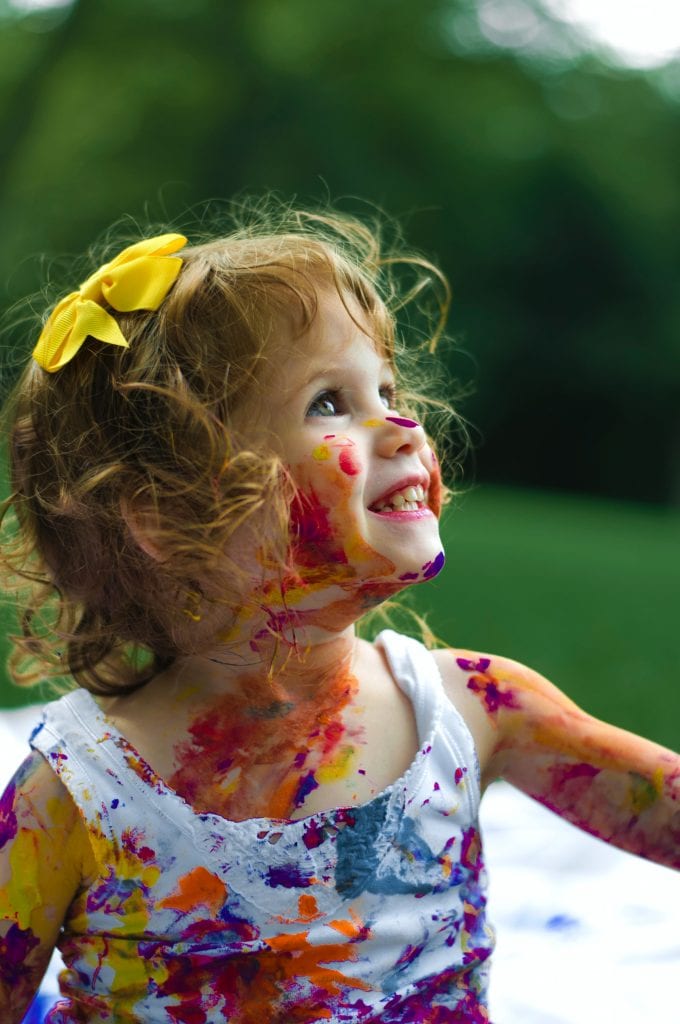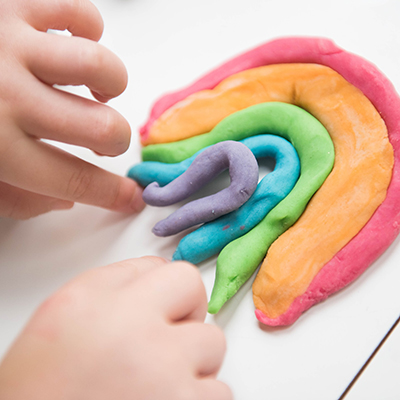
Young children are hardwired to explore the world through their senses. This means that they create an understanding of what is around them largely through touch, smell, taste, sight and hearing. This is also why your sweet child can’t resist splashing in puddles, digging in sand and finger-painting up to the elbows. As messy as this sounds, this is good news.
How does sensory play translate into learning?
Sensory play affords children the opportunity to determine for themselves how things are constructed and how the materials respond. Consider the wonder of pouring water from a pitcher into a colander and then seeing how it flows out into a bucket. Or mixing muffin ingredients with your little one and later observing how the batter looks different after having been in the oven. (What happened? What was added? Heat? The oven is hot? Do you mean that heat changes things?) Sensory play is often your child’s first experiences with scientific method. They have a plan, make a prediction about how it will work out and then try out their idea. Telling their friends about it on Zoom is a child’s way of recording the findings.
As young children explore with their senses, they also build language. Through their play, they connect words to objects and experiences. Sensory play also provides a natural opportunity to extend your little one’s vocabulary. By example, if a child’s sandcastle is very tall, you can say, “Wow, that is tall. Why, it’s gigantic. Colossal. It’s a mega-castle.” You also just taught a lesson on synonyms.
Sensory play helps a child to strengthen his finger muscles and eye-hand coordination. Being able to control the independent movement of one’s fingers is key for the school readiness skills of writing, drawing, cutting and tracing.
And, last but not least, sensory explorations strengthen neural pathways in a child’s brain. As your child participates in a new activity such as turning a crank or shoveling mud into a bucket, he is creating pathways of information about weight, texture and measurement, as well as concepts such as cause and effect.

So, while homeschooling to stay on top of traditional academics, provide breaks that include water play, kinetic sand, silly putty, play dough and goop. The kids and their teachers will thank you in years to come.
Here are some links to simple sensory recipes and nontoxic product suggestions:
- Here’s a recipe for “oobleck,” which your kids might know from a Dr. Seuss book.
- Here’s a fun recipe for “slime.”
- Try out this homemade play dough recipe.
- These fun bathtime crayons let the kids make no-mess art in the tub.
- These non-staining plant-based food colorings are great for sensory play.
Susan Rudich, M.Ed, is an early childhood educator, parenting coach and adjunct professor of child development. She can be reached at susanrudich@yahoo.com























